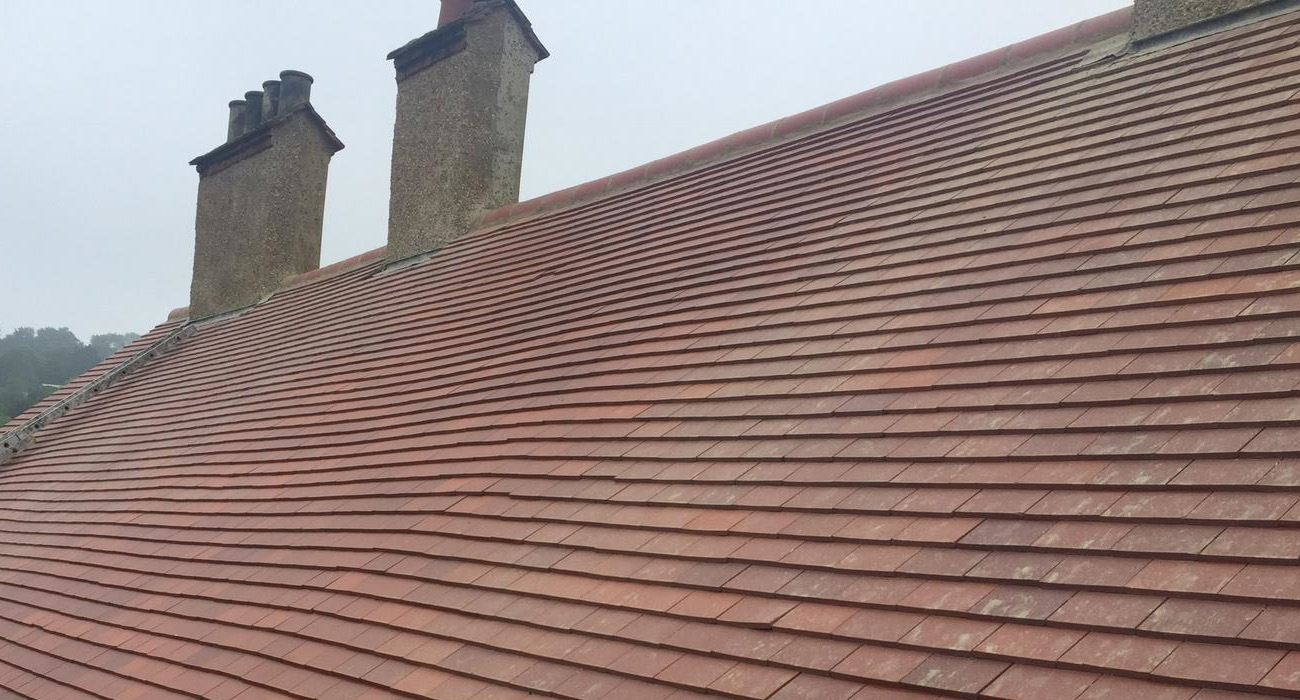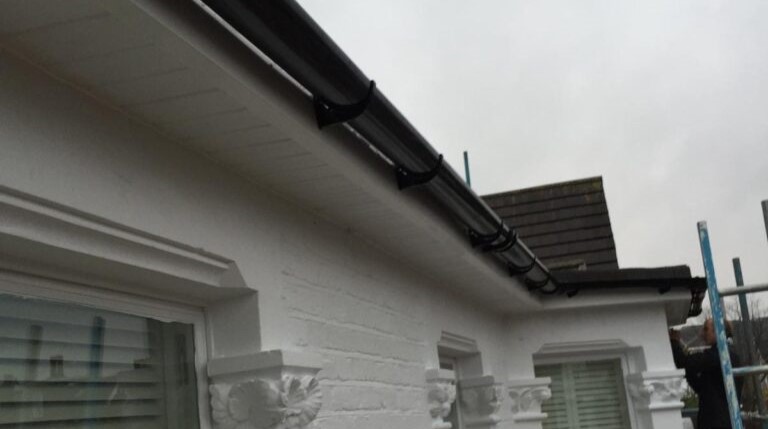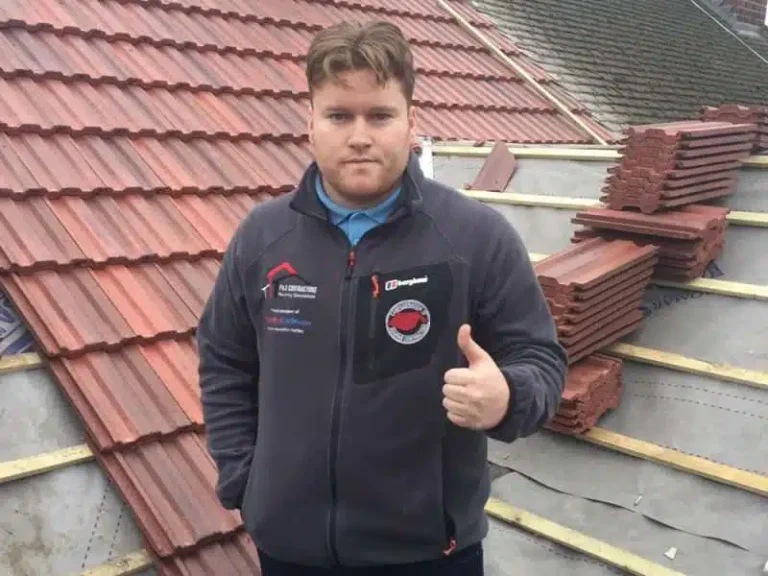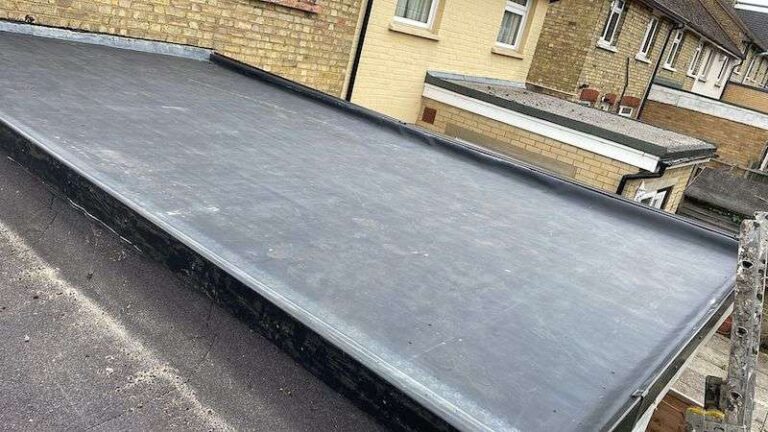
How to Repair a Flat Roof: A Step-by-Step Guide
Repairing a flat roof can seem daunting, but it’s manageable with the right steps. You can fix it yourself with some basic tools and guidance.
Flat roofs are common in many homes and commercial buildings. They offer a sleek look but can be prone to leaks and damage over time. Knowing how to repair a flat roof can save you time and money. This guide will walk you through the process step-by-step, ensuring you address any issues effectively.
Whether it’s a small leak or a more significant problem, understanding the repair process will help you maintain your roof’s integrity. So, grab your tools, and let’s get started on fixing that flat roof!
Common Flat Roof Issues
Repairing a flat roof can be a daunting task, but understanding the common issues that arise can make the job much easier. Flat roofs, while practical and space-efficient, come with their own set of problems. Recognizing these issues early can save you time, money, and a lot of headaches. Here, we will discuss two of the most common problems: ponding water and cracks and blisters.
Ponding Water
Ponding water is a frequent issue on flat roofs. Unlike sloped roofs, flat roofs do not naturally drain water. This can lead to water pooling in certain areas. Over time, this standing water can cause significant damage.
Why is Ponding Water a Problem?
- Structural Damage: Prolonged water exposure can weaken the roof structure.
- Leaks: Water can seep through small cracks, leading to leaks inside the building.
- Mold Growth: Standing water can promote mold and mildew growth, posing health risks.
- Inspect the Roof: Check for any visible dips or low areas where water collects.
- Improve Drainage: Add extra drains or improve the existing drainage system.
- Add Tapered Insulation: Install tapered insulation to direct water towards drains.
- Regular Maintenance: Ensure drains are clear of debris to prevent water buildup.
Cracks And Blisters
Cracks and blisters are other common problems on flat roofs. These issues can compromise the roof’s integrity and lead to leaks and further damage.
Why Do Cracks and Blisters Occur?
- Sun Exposure: UV rays can cause the roofing material to deteriorate and crack.
- Temperature Fluctuations: Extreme temperatures can lead to expansion and contraction, causing blisters.
- Poor Installation: Incorrect installation can result in weak spots prone to cracking and blistering.
- Identify the Problem Areas: Inspect the roof for any visible cracks or blisters.
- Clean the Surface: Remove any debris or dirt around the damaged area.
- Cut Out Blisters: Carefully cut away the blistered area without damaging the underlying layers.
- Apply Roofing Cement: Use a high-quality roofing cement to seal the cracks and fill the cut-out blisters.
- Add a Patch: Place a patch over the repaired area to reinforce the fix.
- Regular Inspections: Schedule regular inspections to catch and repair new cracks or blisters early.
Tools And Materials Needed
Repairing a flat roof can be a daunting task, but with the right tools and materials, it becomes manageable. Understanding what you need before starting the repair helps ensure a smooth process. Let’s dive into the essential tools and materials required for this project.
Essential Tools
Having the right tools is crucial for a successful flat roof repair. Here are the essential tools you will need:
- Utility Knife: Used for cutting roofing materials.
- Hammer: For securing nails and other fasteners.
- Roofing Nails: Essential for attaching roofing materials.
- Measuring Tape: Ensures accurate measurements.
- Chalk Line: Helps in marking straight lines on the roof.
- Roofing Shovel: Useful for removing old roofing material.
- Caulking Gun: For applying sealant or roof cement.
- Scraper: To remove old, damaged material and debris.
- Safety Gear: Gloves, safety glasses, and a harness for protection.
Repair Materials
In addition to the tools, you will need specific materials for the repair. The type of materials depends on the extent of the damage and the type of roof. Here are some common materials used in flat roof repairs:
- Roofing Cement: A must for patching holes and sealing leaks.
- Roofing Felt: Provides an additional waterproof layer.
- Asphalt Shingles: Commonly used for small repairs on flat roofs.
- Roofing Tape: Useful for quick fixes and sealing seams.
- Roofing Membrane: Essential for larger areas needing repair.
- Sealant: Ensures watertight seals around edges and seams.
- Metal Flashing: Used to direct water away from the roof.
By gathering these tools and materials before beginning your project, you will be well-prepared to tackle your flat roof repair efficiently and effectively.
Safety Precautions
Repairing a flat roof can be a challenging task. Safety precautions are essential to protect yourself from accidents. Always prioritize safety to ensure the job is done without injury.
Protective Gear
Wearing the right protective gear is crucial. It shields you from potential hazards and ensures your safety while working.
Here are some essential items you should wear:
- Helmet: Protects your head from falling objects.
- Safety glasses: Shield your eyes from debris and dust.
- Gloves: Protect your hands from sharp objects and chemicals.
- Non-slip shoes: Provide better grip and prevent slips.
- Knee pads: Protect your knees when kneeling on hard surfaces.
Using a safety harness is also recommended. It prevents falls, especially when working at heights. Ensure your gear is in good condition and fits properly.
Inspect your gear before use. Replace damaged items. Always be prepared and stay safe.
Working At Heights
Working at heights requires extra caution. Falls from roofs can cause serious injuries. Follow these tips to stay safe:
- Use a stable ladder: Ensure the ladder is on a flat surface.
- Secure the ladder: Tie it down to prevent movement.
- Work with a partner: Have someone assist you.
- Use a safety harness: Attach it to a secure anchor point.
- Be aware of weather conditions: Avoid working in rain or strong winds.
Always maintain three points of contact when climbing a ladder. This means using both hands and one foot, or both feet and one hand. It provides better stability.
Set up guardrails if possible. They provide additional protection. Avoid carrying heavy tools while climbing. Use a tool belt or hoist them up separately.
Stay alert and focused. Do not rush. Taking your time reduces the risk of accidents. Plan your tasks and ensure you have all necessary materials within reach.
Preparing The Roof
Flat roof repair can seem daunting, but with the right preparation, it becomes manageable. Preparing the roof is crucial to ensure a lasting repair. This process includes cleaning the surface and inspecting for damage. Let’s explore these essential steps in detail.
Cleaning The Surface
Proper surface preparation is the first step in any flat roof repair. A clean surface ensures better adhesion of the roofing materials and roofing sealant. Follow these steps to clean your flat roof effectively:
- Remove Debris: Clear leaves, twigs, and other debris. Use a broom or leaf blower.
- Wash the Surface: Use a garden hose or pressure washer. Make sure to remove dirt, algae, and moss.
- Scrub Stains: For stubborn stains, use a scrub brush with a mild detergent. Rinse thoroughly.
- Dry the Roof: Allow the roof to dry completely. Moisture can prevent proper adhesion of patching materials.
Cleaning the surface helps in leak detection and ensures the roofing sealant bonds well. This step in roof maintenance is vital for effective waterproofing and lasting flat roof repair.
Inspecting Damage
After cleaning, conduct a thorough damage assessment. This step identifies areas needing repair and helps plan your patching techniques. Follow these guidelines to inspect your flat roof:
- Check for Cracks and Blisters: Look for cracks, blisters, and bubbles. These can indicate trapped moisture or poor adhesion.
- Look for Ponding Water: Check for areas where water pools. Ponding water can cause leaks and further damage.
- Inspect Seams and Flashings: Examine seams and flashings for gaps or deteriorations. These areas are prone to leaks.
- Assess Previous Repairs: Check the condition of earlier repairs. Ensure they are holding up and not causing new issues.
Document any damage you find. A detailed damage assessment helps in choosing the right materials and patching techniques for DIY roof repairs. This process ensures your flat roof repair addresses all potential issues, leading to a more durable result.
Repairing Small Leaks
Flat roofs are popular because they are easy to build and maintain. But, they can develop small leaks over time. Repairing small leaks quickly is important. It prevents bigger damage. Let’s dive into how to repair these leaks effectively.
Sealants And Patches
Small leaks can be fixed using sealants and patches. These materials are affordable and easy to use. You can find them at most hardware stores.
Sealants come in tubes. You apply them like caulk. They are flexible and waterproof. Here are some types of sealants:
- Silicone Sealant: Good for extreme weather. Lasts long.
- Acrylic Sealant: Best for small cracks. Dries quickly.
- Polyurethane Sealant: Very strong. Works well on metal roofs.
Patches are another option. They cover larger areas. Patches come in different materials like rubber, metal, or fabric. Here’s a quick comparison:
| Patch Material | Benefits |
| Rubber | Flexible, durable |
| Metal | Strong, long-lasting |
| Fabric | Easy to apply, affordable |
Application Techniques
Applying sealants and patches requires some technique. Doing it right ensures the leak is fixed. Follow these steps for best results:
- Clean the area. Remove dirt and debris.
- Dry the area completely.
- Apply the sealant. Use a caulk gun for smooth application.
- Smooth the sealant with a putty knife.
- Let it dry. Check the package for drying time.
- Clean the area. Make sure it’s dry.
- Cut the patch to size. It should cover the leak completely.
- Apply adhesive. Follow the instructions on the package.
- Place the patch over the leak. Press it down firmly.
- Seal the edges with a sealant. This prevents water from getting under the patch.
Using the right techniques ensures your repair lasts. Take your time. Be thorough. Your flat roof will thank you.
Fixing Larger Damages
Flat roofs are practical, but they can suffer damage over time. Fixing larger damages on a flat roof involves more effort. This guide will help you understand how to repair significant issues, ensuring a long-lasting solution.
Replacing Sections
When a section of your flat roof is severely damaged, you might need to replace it. Here’s how:
- Identify the damaged area: First, locate the damaged sections. Mark these areas with chalk or tape.
- Remove the old material: Carefully cut and remove the damaged roofing material. Use a utility knife or a saw for this step.
- Inspect the underlayer: Check the insulation and underlayer for damage. Replace any damaged parts to prevent future issues.
- Cut new roofing material: Measure and cut new roofing material to match the section you removed. Ensure it fits perfectly.
- Install the new section: Secure the new material in place. Use roofing nails or adhesive as needed. Ensure there are no gaps or overlaps.
- Seal the edges: Use roofing cement to seal the edges. This step prevents water from seeping under the new section.
Replacing sections can be straightforward with the right tools and materials. Here’s a quick summary in a table format:
Reinforcement Methods
Reinforcing a flat roof can prevent future damage. Here are some methods to consider:
- Add extra layers: Apply additional layers of roofing material. This adds strength and durability.
- Install metal flashing: Use metal flashing around edges and joints. It provides extra protection against water seepage.
- Use roof coatings: Apply a high-quality roof coating. This helps waterproof and protect the roof surface.
- Strengthen supports: Check the roof supports. Add extra support beams if necessary.
Each method has its advantages. Here’s a comparison:
| Method | Advantage |
| Add extra layers | Increases durability |
| Install metal flashing | Protects against water |
| Use roof coatings | Waterproofs the surface |
| Strengthen supports | Improves structural integrity |
By reinforcing your flat roof, you ensure it can withstand harsh weather and last longer. Choose the best method that suits your roof’s condition.
Preventive Maintenance Tips
Maintaining a flat roof can save you from costly repairs in the future. Regular care helps spot issues before they become major problems. Below are some preventive maintenance tips that can keep your flat roof in great shape.
Regular Inspections
Regular inspections are crucial for the longevity of your flat roof. Conducting these checks can help you identify and fix issues before they escalate. Here are some steps you should follow:
- Monthly Visual Checks: Walk around your roof and look for obvious signs of damage like cracks, blisters, or punctures.
- Check for Pooling Water: Standing water can weaken the roof material. Ensure that drainage systems are working properly.
- Inspect Seals and Joints: Check the seals around vents, skylights, and other openings. Any gaps or cracks should be sealed immediately.
- Inspect Flashing: Make sure the flashing is intact. Damaged flashing can lead to leaks.
Document your findings using a checklist:
| Inspection Task | Status |
| Visual Check for Damage | Complete / Needs / Attention |
| Check for Pooling Water | Complete / Needs / Attention |
| Inspect Seals and Joints | Complete / Needs / Attention |
| Inspect Flashing | Complete / Needs / Attention |
By keeping a record, you can track recurring issues and address them promptly. Regular inspections can extend the life of your flat roof and save you money in the long run.
Seasonal Care
Seasonal care is another important aspect of flat roof maintenance. Different seasons bring different challenges. Preparing your roof accordingly can prevent damage:
- Fall: Clear leaves and debris from the roof and gutters. Check for any blockages in the drainage system.
- Winter: Remove snow and ice buildup. These can add extra weight and cause leaks.
- Spring: Inspect for any damage caused by winter weather. Repair cracks and other issues as soon as possible.
- Summer: Check for UV damage. Hot temperatures can cause roofing material to deteriorate.
By following these seasonal care tips, you can ensure that your flat roof remains in good condition all year round. This proactive approach can prevent small issues from turning into major repairs, saving you time and money.
When To Call A Professional
Flat roof repair can be a challenging task, especially for those with little to no experience. While many homeowners may attempt DIY roof repair, there are certain situations where it is best to call a professional. Knowing when to seek expert help can save you time, money, and prevent further damage to your home. Here, we discuss the signs of major damage and complex repair needs that necessitate professional intervention.
Signs Of Major Damage
Recognizing major damage early can prevent costly repairs down the line. Here are some key signs that you might need professional help:
- Water Damage: Puddles or water stains on your ceiling can indicate severe water damage. This often points to prolonged leaks that have penetrated the roofing materials.
- Cracks and Blisters: Large cracks or blisters on the roof surface can compromise its integrity. These issues can worsen over time, leading to significant leaks.
- Excessive Sagging: If your flat roof sags in the middle, it could be a sign of structural problems. This requires immediate attention from a roofing professional.
- Frequent Leaks: Occasional leaks can be fixed with DIY roof repair techniques. But if you notice frequent leaks, it may indicate underlying issues that need professional repair.
- Mold and Mildew: The presence of mold or mildew on your roof or inside your home can be a sign of persistent moisture problems. This often requires expert weatherproofing solutions.
Below is a table summarizing the signs of major damage and why they require professional attention:
| Damage Type | Why Call a Professional |
| Water Damage | Requires thorough inspection and repair to prevent structural damage |
| Cracks and Blisters | Needs expert assessment to ensure proper roof restoration |
| Excessive Sagging | Indicates potential structural issues needing immediate repair |
| Frequent Leaks | Underlying problems that simple fixes can’t resolve |
| Mold and Mildew | Expert weatherproofing needed to prevent health hazards |
Complex Repair Needs
Some flat roof repair tasks are too complex for a typical DIY enthusiast. When you encounter these situations, it is wise to call a professional:
- Roof Inspection: A professional can conduct a thorough roof inspection to identify hidden problems. They use specialized tools and knowledge to assess the overall condition of your roof.
- Roofing Leaks in Unreachable Areas: Leaks in hard-to-reach places may require advanced repair techniques. Professionals have the experience and equipment to handle such challenges.
- Replacing Flat Roofing Materials: Proper replacement of roofing materials is crucial for maintaining the roof’s integrity. Professionals ensure the use of high-quality materials and correct installation methods.
- Weatherproofing: Effective weatherproofing involves applying specialized coatings and materials. This ensures long-term protection against the elements, which is best done by experts.
- Structural Damage: Any signs of structural damage, like rotting wood or compromised supports, need immediate to ensure safety.
When faced with complex repair needs, it is better to rely on professional expertise. Attempting to tackle these issues on your own can lead to incomplete or improper repairs, causing further damage and expense. Professionals have the skills, experience, and tools to handle these complex tasks, ensuring your flat roof is repaired correctly and efficiently.
Frequently Asked Questions
How Do You Fix A Flat Roof Leak?
Identify the leak source, clean the area, apply roofing cement, and seal with a patch. Regularly inspect for damages.
What Materials Are Needed To Repair A Flat Roof?
You’ll need roofing cement, a patch material, a utility knife, and a trowel. Ensure materials are compatible with your roof.
How Often Should You Inspect A Flat Roof?
Inspect your flat roof twice a year and after severe weather events. Regular inspections prevent major damage.
Can I Repair A Flat Roof Myself?
Yes, minor repairs can be done yourself. For major issues, it’s best to hire a professional for safety and quality.
Conclusion
Repairing a flat roof can seem challenging but is manageable with proper steps. Gather necessary tools and materials. Inspect and clean the roof thoroughly. Patch or replace damaged areas carefully. Ensure proper sealing to prevent future leaks. Regular maintenance helps extend your roof’s life.
Always prioritize safety when working on your roof. Seek professional help if unsure. Follow these tips for a durable, leak-free flat roof. Happy repairing!



